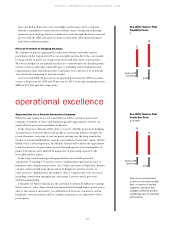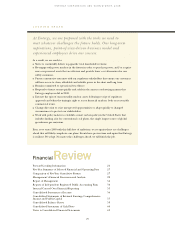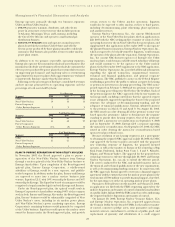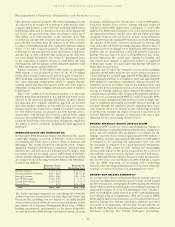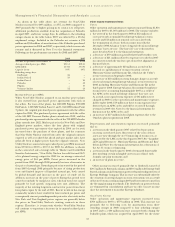Entergy 2008 Annual Report Download - page 24
Download and view the complete annual report
Please find page 24 of the 2008 Entergy annual report below. You can navigate through the pages in the report by either clicking on the pages listed below, or by using the keyword search tool below to find specific information within the annual report.
Some government officials, utility industry leaders and
environmental advocates are focused on developing clean
generation alternatives, including nuclear, wind and solar.
Although these are worthy efforts, they ignore the economic
reality of power generation. Power generated by coal-fired
plants is significantly cheaper than power from any clean
generation alternative. It is simply unrealistic to expect any
country to replace existing or planned coal-fired power plants
with clean generation. The cost is prohibitive.
As a result, it’s unlikely that any country would have the will
to impose this level of economic burden on its citizens. Even
if U.S. leaders mustered the will to do it, it would not slow
climate change. Without similar action in developing countries
like China and India, CO2 emissions will continue to grow and
impact every country around the world.
Finding a technological solution to reduce CO2 emissions from
existing and planned coal power plants must be top priority.
An affordable retrofit technology to capture and securely store
carbon emissions from existing coal plants could be applied
worldwide. A post-combustion carbon-capture and storage
solution for conventional coal plants is the single biggest
opportunity we have to reduce greenhouse gas emissions. And
it is the one that is critically needed if we are to have any hope
for meeting the forecast growth in global energy demand and
making the significant emission reductions needed to reduce
climate change impacts. We simply cannot get there without
the global deployment of an affordable retrofit carbon-capture
and storage technology for coal plants.
Avoiding an Ineffective, Expensive
Renewable Portfolio Standard
Many well-intentioned environmentalists and government
leaders are advocates for a national renewable portfolio
standard, requiring energy companies to produce specific
amounts of electricity from wind, solar and geothermal energy.
While a renewable portfolio standard is a mechanism for
creating and establishing renewable energy technologies, it
does little to reduce greenhouse gas emissions and will make
energy production excessively expensive.
Coal-fired plants are the cheapest source of electricity and
are the least likely to be displaced by high-cost renewable
energy sources. Instead, natural gas with its low carbon content
is likely to be the first source displaced by renewables because it
is more expensive than coal. That means that even a renewable
portfolio standard as high as 20 percent would reduce
emissions by only a small fraction of what is needed to lower
the risk of catastrophic climate change. That modest decrease
would come at twice the cost per ton of reduction that would
result from a pure cap-and-trade strategy.
A renewable portfolio standard also does nothing to help
develop a technological solution for conventional coal plants.
In fact, a renewable portfolio standard would only divert
attention from this vital mission. A strong cap-and-trade
program that puts a price on CO2 emissions is the best way to
make renewable energy sources more economically attractive
and spur their development.
America Must Lead Now
While the United States cannot fix the climate change problem
without the cooperation of other countries, it is clearly
America’s responsibility to lead on this issue. Americans use
nearly six times more energy per capita than the Chinese and
twice as much as other developed countries. Americans emit
about four times as much CO2 per capita as the Chinese. As the
largest, most developed economy in the world, we are in the
most advantaged position to fund new technologies, explore
policy options and set the standard for meaningful action on
climate change.
We believe U.S. Congressional leaders should take the
following actions to address climate change:
n Cap future CO2 emissions in the United States immediately.
We continue to believe that market forces are the best way
to find climate change solutions. Therefore, we support a
cap-and-trade system or carbon tax as the best approach to
implementing an emissions cap. We need to force change
now by putting a price on carbon emissions that is high
enough to encourage new technologies, yet not so high as
to be economically unsustainable. We believe $50 per ton by
2020 is in the right range.
n Focus research and development funds on finding an
affordable technology to retrofit coal plants in the U.S.
with the goal of exporting this solution to China and other
countries. It is naïve and unrealistic to expect clean power
sources will replace the installed base of coal-fired plants.
We need a real solution that addresses the real source of
man-made CO2 emissions.
n Shield those who can least afford it from the impact of
climate change action. Utility customers will bear the brunt
MEETING THE CHALLENGE:
Making a difference with our guidelines for a
22









